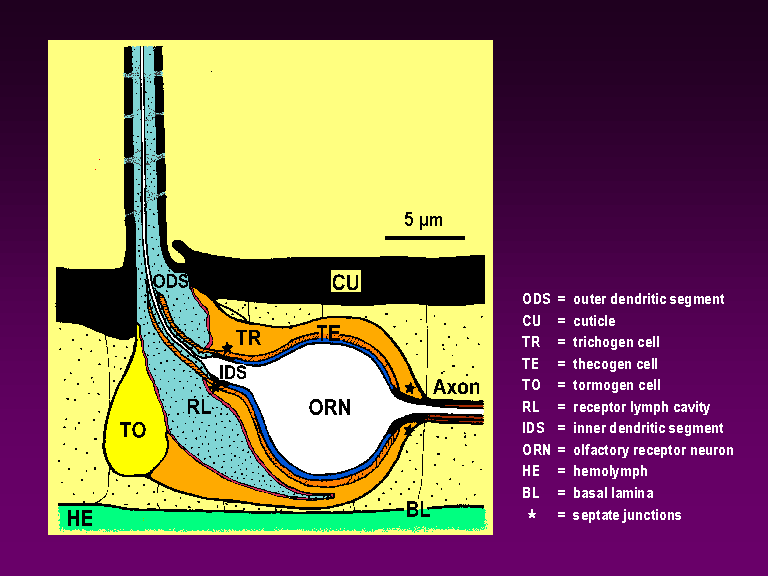
A pheromone-sensitive trichoid sensillum complies to the
general morphology of epithelial insect sensilla. A number of
olfactory receptor neurons - in M. sexta there are two in
each sensillum - is surrounded by a common set of accessory cells.
These are the innermost thecogen, the trichogen, and the tormogen
cell. While the thecogen cell forms a dendritic sheath around the
inner and part of the outer dendritic segment, the other two
constitute the receptor lymph cavity.
The outer
dendritic segment protrudes into the hair shaft, which - drawn to
scale - would end just below your ceiling. Pores in the cuticle of
the hair shaft allow the odorants to enter. The function of the
pore tubules inserting at or near the pores is not completely
understood. The liquid in hair shaft and receptor lymph cavity,
the receptor lymph, contains a considerably higher K+
concentration than the hemolymph, together with an amazingly high
concentration of pheromone-binding protein.
While the
first step in the chemo-electrical transduction, the generation of
receptor potentials, very probably takes place at the outer
dendrite, the origin of the action
potentials is so far unknown. Their waveform in extracellular
tip
recordings together with the polarity
of injected currents that elicit them, suggests a location of
the action potential generator in the soma or axon region.
Last Update 5/7/99